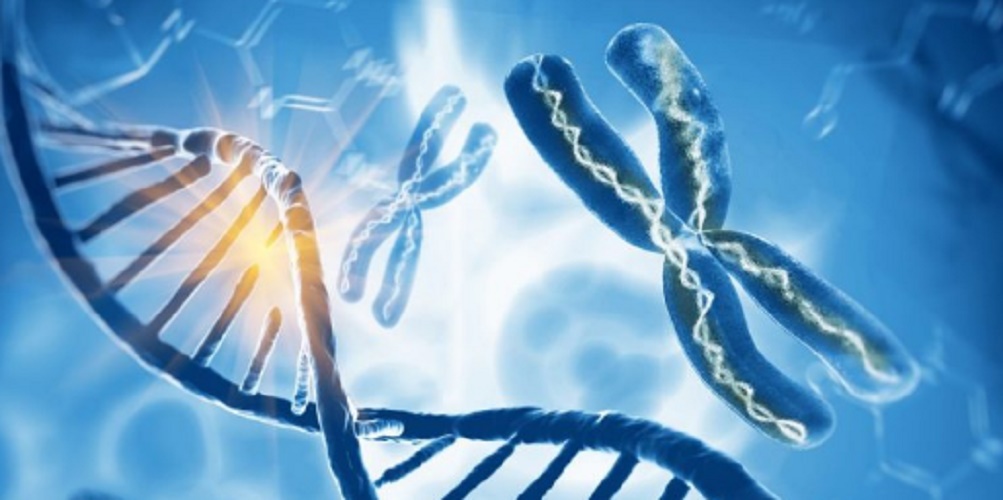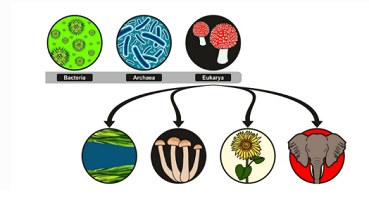What are chromosomes?
We explain what chromosomes are and how their structure is composed. In addition, its main functions and types of chromosomes.
-
What are chromosomes?
Chromosomes are called highly organized structures inside biological cells , composed of DNA and other proteins , and where most of the genetic information of an individual resides. They have a definite form of X, which is perfectly observable during the stages of cell division or replication ( meiosis or mitosis ).
Each chromosome has a characteristic shape and size, and they are found in pairs , usually in identical numbers for all individuals of the same species. Depending on the amount of chromosomes they have (chromosomal load), the cells can be diploid (2n) or haploid (1n). The chromosomal number of the human species is 46 pairs.
Chromosomes were discovered in plant cells at the end of the 19th century by scientists Karl Wilhelm von Nägeli (Switzerland) and Edouard Van Benenden (Belgium), independently, and their name comes precisely from the tinctures used to observe them (from Greek: chroma , “color”, and soma , “body”).
But until the twentieth century the role of chromosomes in inheritance and genetic transmission was not understood: Mendel’s laws and the first DNA research had to be expected .
In the cells of eukaryotic beings (that is, provided with a cell nucleus ), the chromosomes are made up of chromatin, the substance that makes up DNA, RNA and other proteins, some basic ones called histones and other non-histones. All this composes nucleosomes, forming inactive groups of DNA that make up the chromosomes themselves.
-
Chromosome structure

The chromosomes have a double structure , composed of two structures parallel to each other and joined by a centromere, called chromatids. In each of the “arms” of a chromatid, the genes are located , in the same position with respect to their counterpart (remember that they are X-shaped), in compartments called locus ( plural loci ).
As the chromosomes are composed of a centromere that divides each chromatid into two arms : one short (arm p) and one long (arm q), depending on the location of the centromere, one can speak of:
- Chromosomes metacentric . The centromere is almost half the structure, forming arms of very similar length.
- Submetacentric chromosomes . The centromere is displaced from the center, but not too much. That forms inaccurate and asymmetrical arms, clearly distinguishable.
- Acrocentric chromosomes . The centromere is at one end, forming long different arms.
On the other hand, eukaryotic chromosomes have telomeres at their ends: composed of regions of non-coding, highly repetitive DNA, which fulfills the function of providing structural stability to the entire chromosome.
In prokaryotic organisms (without a cell nucleus), on the other hand, chromosomes do not have telomeres, since they are circular in shape.
-
Chromosome function
The function of the chromosomes could not be more important: they are responsible for transmitting the genetic information contained in the DNA of the stem cell to the descendants , allowing cell replication and for the growth of organisms, the replacement of old or damaged cells, and the creation of reproductive cells (as well as new individuals during sexual reproduction ). These are biological structures that preserve the genetic content and prevent (if possible) from being damaged or lost.
-
Types of chromosomes

As we have seen, there are different chromosomes for eukaryotic and prokaryotic cells , differentiable in form and function.
- Prokaryotic chromosomes . They possess a single DNA chain and are located within the nucleoids dispersed in the cytoplasm of the cells.
- Eukaryotic chromosomes . Considerably larger, they have a double strand of linear DNA (double helix).
However, the chromosomes of eukaryotic living beings can also be distinguished according to their specific function in the constitution of the total genome of the individual, something that is extremely important when a new individual of the species is being created through sexual reproduction:
- Somatic chromosomes . Also called autosomal, they give the individual their non-sexual characteristics, that is, those that define him in the rest of the non-reproductive aspects.
- Sex chromosomes . Known as allosomes, they are the chromosomes that determine the sexual characteristics of the individual and therefore can be differentiated according to the biological gender: men have a pair 23 of XY type chromosomes, while women of type XX.





